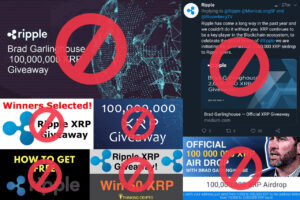Ripple publishes the quarterly XRP Markets Report to voluntarily provide transparency and regular updates on the company’s views on the state of the XRP market, including quarterly sales updates, relevant XRP-related announcements and commentary on previous quarter market developments.
As an XRP holder, Ripple believes proactive communication and transparency are part of being a responsible stakeholder. Moreover, Ripple urges others in the industry to follow its lead to build trust, foster open communication and raise the bar, industry-wide.
On-Demand Liquidity (ODL): Introducing Line of Credit
Last quarter, Ripple launched Line of Credit, a new beta service on RippleNet that allows customers using On-Demand Liquidity (ODL) to source capital on-demand. With Line of Credit, customers can purchase XRP from Ripple on credit which provides capital upfront to help accelerate their business performance and scale. Line of Credit has been piloted by ODL customers and the initial feedback is overwhelmingly positive. Companies can use the capital to further invest in their business to enter new markets and reach new customers.
In some instances, XRP originates through Ripple, instead of an exchange, to initiate cross-border payments at scale. ODL will evolve as Ripple continues to provide innovative, financial solutions that leverage XRP to solve pain points for its customers.
XRP Purchases
As indicated in the Q2 2020 XRP Markets Report, Ripple is purchasing – and may continue to purchase – XRP to support healthy markets. This is a near-term product solution for the Line of Credit beta. Long-term, Ripple is building new ODL capabilities to dynamically source XRP liquidity from the open market, not just Ripple.
Disciplined, Responsible Stakeholders: Q3 Sales and Purchases
Last quarter, total XRP sales, net of purchases, were $35.84 million (USD) vs. $32.55 million the previous quarter. Ripple focused solely on its over-the-counter (OTC) sales and leases as part of providing increased XRP liquidity to certain RippleNet ODL customers to improve their ODL experience, eliminating the need for pre-funding and enabling instant global payments. Similar to recent quarters, Ripple did not sell programmatically.
Total sales, net of purchases, ended the quarter at 10 bps of CryptoCompare TopTier volumes. This is compared to total sales in the previous quarter of 18 bps of CryptoCompare TopTier.
| Sales Summary (dollars in millions) | Q2 2020 | Q3 2020 |
|---|---|---|
| Total ODL-related sales* | 32.55 | 81.39 |
| Total purchases | 0 | 45.55 |
| Sales (net of purchases) | 32.55 | 35.84 |
| Global XRP volume | Q2 2020 | Q3 2020 |
|---|---|---|
| ADV XRP (dollars in millions) | 196.28 | 403.58 |
| Total XRP volume (dollars in billions)** | 17.86 | 37.13 |
| Net sales as % of total volume | 0.18% | 0.10% |
*ODL-related sales include XRP sales to support ODL (including Line of Credit) and key infrastructure partners
**Note: Figures were compiled using the CryptoCompare API for daily TopTier aggregate volumes which reflects total XRP volume in dollars by exchanges that CryptoCompare lists in the TopTier as of the end of Q3. Ripple continues to evaluate its benchmarks given challenges, such as fake volume, that continue to persist in the industry.
Certain wallets that are being used for XRP sales also provide short term leases to market makers. This is worth noting given that this is often mischaracterized by market participants as sales. Leases are ultimately returned to Ripple.
Reported Volume
CCTT’s reported daily volume for XRP increased in Q3 2020 from Q2 2020. The average daily volume reported at $403.58 million in Q3 versus $196.28 million in Q2.
Volatility
XRP’s standard deviation of daily returns over Q3 was 3.5%, representing an increase in volatility from Q2’s 3.0% and Q1’s 6.2%. XRP’s volatility over the quarter was higher than that of BTC (3.2%) and ETH (3.3%).
Escrow
In Q3 2020, three billion XRP were released out of escrow (one billion each month). In total across the quarter, 2.4 billion XRP were returned and subsequently put into new escrow contracts. For more information on the escrow process, see here. Note: All figures are reported based on transactions executed during the quarter.
XRP Integrations and Liquidity Update
XRP Integrations
Last quarter saw the continued evolution of XRP infrastructure. FTX integrated the XRP/USD spot listing and began accepting XRP as collateral for all derivatives. Among top crypto exchanges, FTX now holds the largest market share of XRP open interest.
Data sourced 10/03/2020 06:00 AM UTC
In addition, other notable launches include:
- Binance launched XRP/USD inverse perpetual swap collateralized in XRP. On its app, Binance launched XRP put, call and straddle options (long only) as well as leveraged tokens XRP up and XRP down.
- Flare announced the launch of a smart contract platform for XRP through a “utility fork” and making Spark (their token) claimable by certain existing XRP holders. This is positive for the XRP community as it allows developers to create smart contracts for new use cases like lending and derivatives, extending XRP’s utility.
Liquidity and Volume
As for overall liquidity and volume, XRP ended the quarter as the 4th most traded digital asset, moving up from its ranking of 5th place last quarter.
XRP: A Preferred Base Currency for Arbitrage Trading
XRP allows traders to capture time limited arbitrage opportunities that they otherwise would not be able to with other digital assets. XRP’s speed, low transaction costs and reliability are ideal for a currency for market makers and traders to capture more price differences between exchanges. It also reduces the exposure to the various risks involved in those arbitrage trades.
For example, using XRP as a bridge currency across trading venues allows traders to substantially reduce the time needed to do so, and more importantly the related volatility exposure when compared to other digital assets, such as BTC and ETH. This is clearly demonstrated in the chart below of an asset transfer over $10,000 USD equivalent in BTC, ETH and XRP originating from Binance to Coinbase.
Data sourced 10/03/2020 06:00 AM UTC
In fact, the inter-exchange transfer-time for XRP across a selection of major exchanges can go as low as 18 seconds (Bitstamp to HitBTC) where exchange withdrawal times are lowest.
Data sourced 10/03/2020 06:00 AM UTC (originating exchange left / destination exchange top)
XRP Ledger
XRP Ledger Foundation
The XRP Ledger Foundation, an independent and non-profit entity, launched to support the development and adoption of the decentralized XRP Ledger. Ripple, along with Coil and Gatehub, provided an initial donation to help support the Foundation’s work and serve the growing developer community building on the XRP Ledger. The Foundation’s vision is to accelerate the development of a healthy XRP Ledger ecosystem that encompasses the involvement of developers, public and private enterprises and social initiatives focused on financial inclusion and sustainability,
Sustainability
As the world makes a transition to a clean energy future, addressing sustainability across all industries has emerged as a global priority to drive future economic growth – global finance is no exception. In fact, last week, the NYDFS published an open letter to NY Supervised Financial Institutions on climate change, highlighting the potential environmental impact of cryptocurrency mining, specifically the high energy consumption from mining BTC.
Ripple partnered with leading technology and conservation organizations, such as Energy Web Foundation and XRPL Foundation, to ensure all blockchains can become carbon neutral—starting with the XRP Ledger.
XRP is extremely energy efficient by design, with transactions settling without the enormous energy costs associated with proof-of-work mining required by other blockchain based transactions. In fact, for every 1 million transactions, BTC uses power equivalent to 4.51 billion lightbulb hours compared to XRP, which uses power equivalent to 79,000 lightbulb hours. This means that the energy consumption of XRP is 57,000x more efficient than BTC.
Lastly, the release of XRP Ledger v1.6 introduced new features and improvements such as a more robust consensus mechanism and the Negative UNL amendment on devnet to test reliability, stability, performance and security.
Market Commentary
Crypto as an Inflation Hedge
With central banks printing increased amounts of fiat currencies and federal governments passing record levels of fiscal stimulus, inflation concerns gripped the financial markets. Dollar debasement fears began to drive market narrative, leading to 18-month lows in the DXY, and record highs in Gold and Silver. As investors looked for ways to preserve their wealth in supply-limited assets, money naturally flowed into the crypto markets, driving BTC above the 12k mark for the first time in nearly a year.
Continued Institutional Adoption
Institutional demand has been increasing over the past year, and Q3 was no exception. Financial giants such as Standard Chartered Ventures announced the pilot of a custody solution and Fidelity is doubling down on its commitment to the space with the launch of a BTC fund. Notably, Grayscale BTC trust experienced colossal growth which now controls 2.4% of all BTC in circulation. MicroStrategy, a NASDAQ listed technology company, announced the purchase of over $425M of BTC during the quarter, marking the entrance of public companies in crypto investing.
Rise of Decentralized Finance
DeFi dominated in July and August of 2020, with the total value locked up in the space rising sharply from $2B to $11B attracting record volumes. This level of hype led to a self-reinforcing cycle of buying, even on foodie inspired tokens such as Sushi, Hotdog, and Yam. Digital assets with market capitalizations of less than $500M were topping volume rankings on centralized exchanges, regularly outrading top 10 large cap assets. The hype cycle finally peaked in September and the DeFi bubble deflated (not burst), causing most assets in the space to retrace as much as 60% from their highs.


